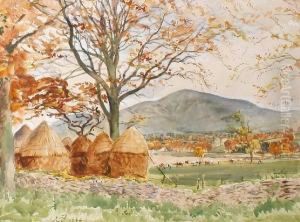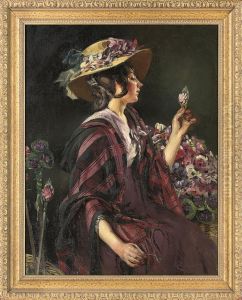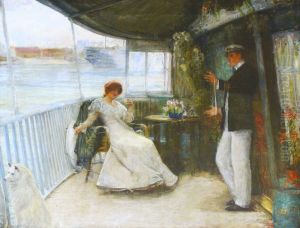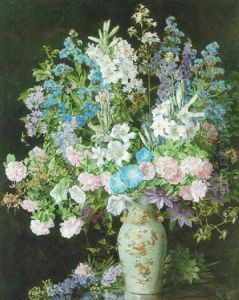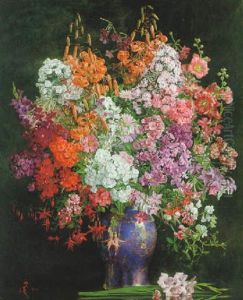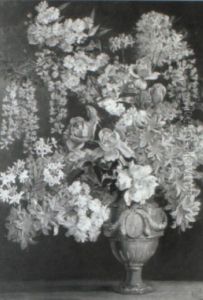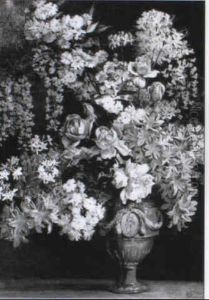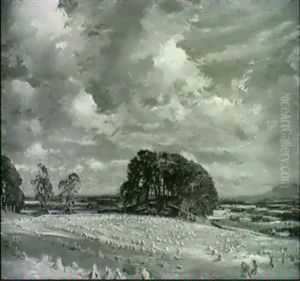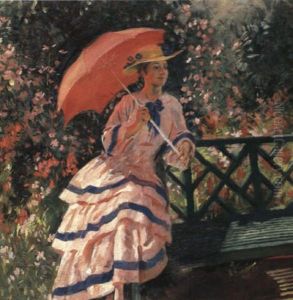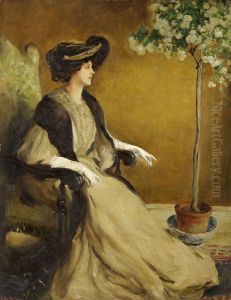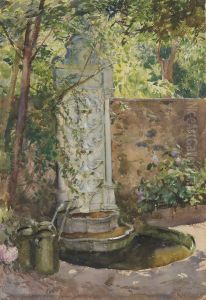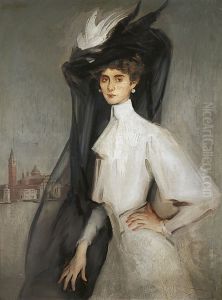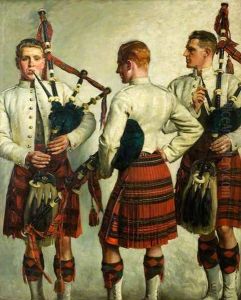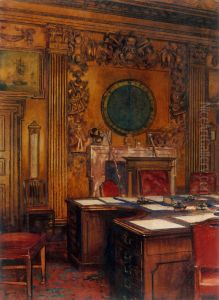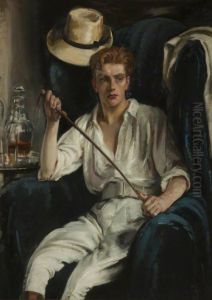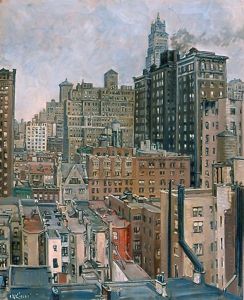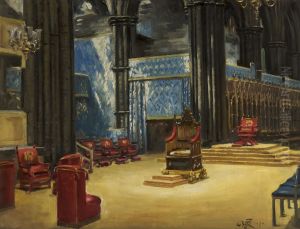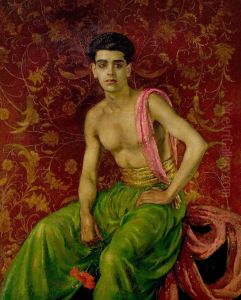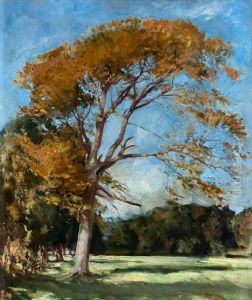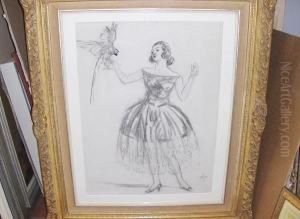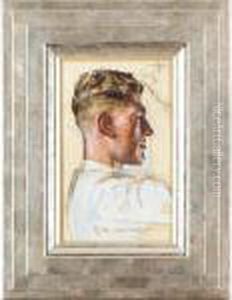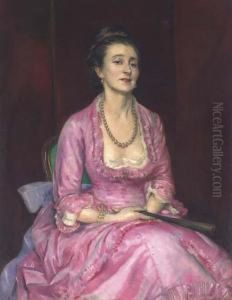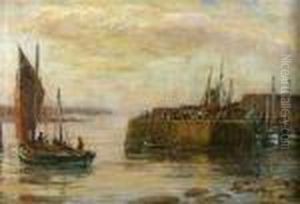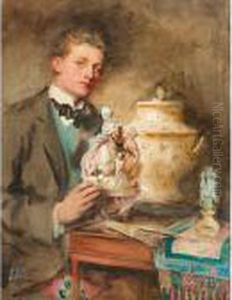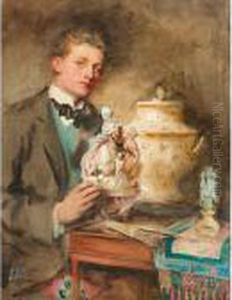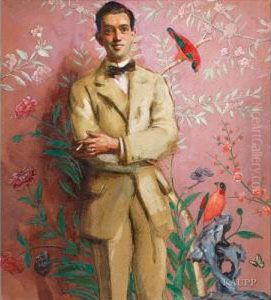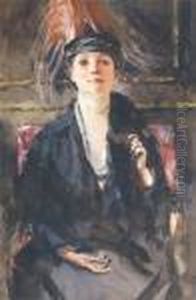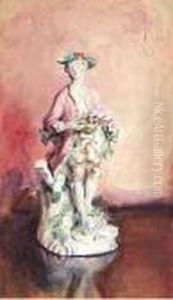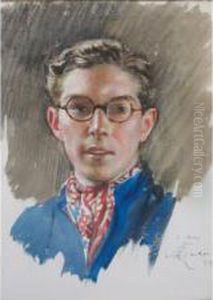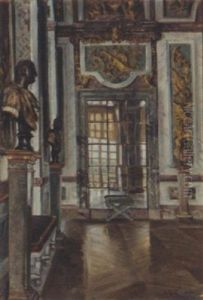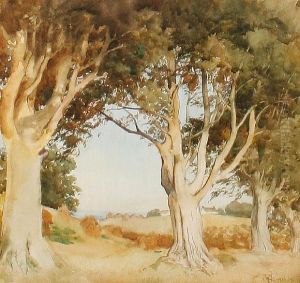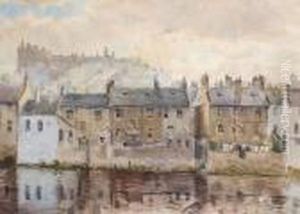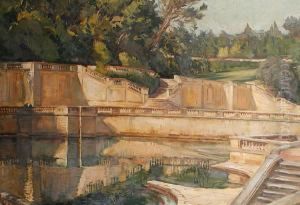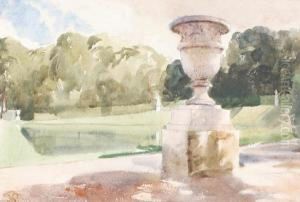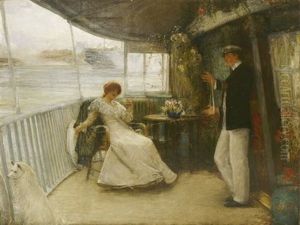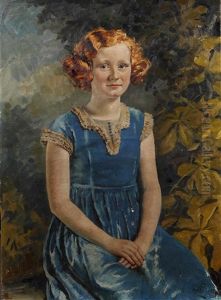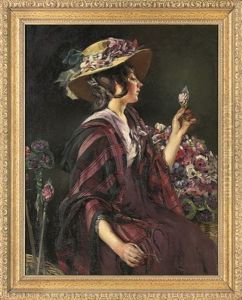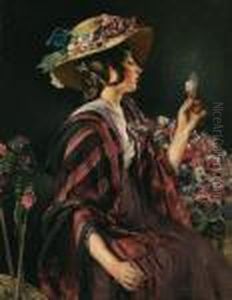William Bruce Ellis Ranken Paintings
William Bruce Ellis Ranken was born in Edinburgh, Scotland, in 1881 into an affluent family. His talent for painting emerged early on, and he was encouraged to pursue his artistic passion. Ranken attended the Edinburgh School of Art, where he honed his skills and developed a distinctive style that would later gain him recognition on both sides of the Atlantic. In 1903, he moved to London and continued his studies at the Slade School of Fine Art, an institution known for its rigorous training and for producing artists of high calibre.
Ranken's career took a significant turn when he was introduced to the American art collector and philanthropist, John Singer Sargent, who became his mentor and friend. Sargent's influence was pivotal in Ranken's development as an artist, and through this connection, he gained entry into the upper echelons of British and American society. This access provided him with numerous commissions, particularly for portraits. Ranken became renowned for his ability to capture the likeness and personality of his subjects, which included members of the aristocracy, prominent social figures, and his friends and family.
In the 1920s, Ranken expanded his repertoire to include interior scenes and landscapes, which were marked by their vibrant color palette and dynamic composition. His work often depicted the luxurious settings and gardens of the estates of his wealthy patrons, reflecting the opulence of the era. Ranken's travels to the United States further broadened his artistic horizons and clientele. He was celebrated for his exhibitions in New York and other American cities, where his portraits and landscapes were highly sought after.
Despite his success, Ranken's work fell into relative obscurity after his death in 1941. However, in recent years, there has been a resurgence of interest in his paintings. Today, Ranken is appreciated not only for his technical skill and the beauty of his compositions but also for his contributions to portraiture and landscape painting in the early 20th century. His work is included in the collections of major museums and galleries, serving as a testament to his enduring legacy in the art world.
